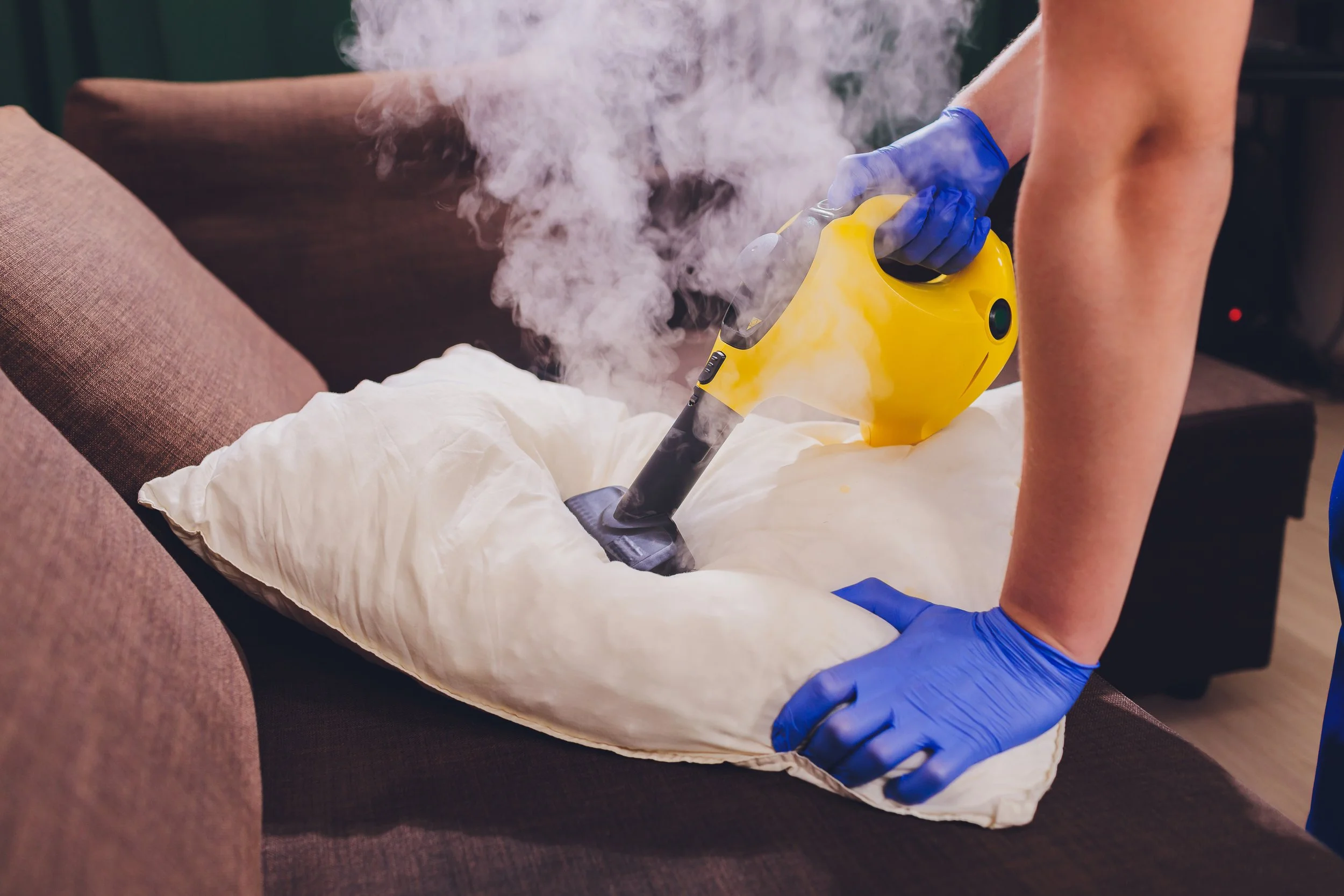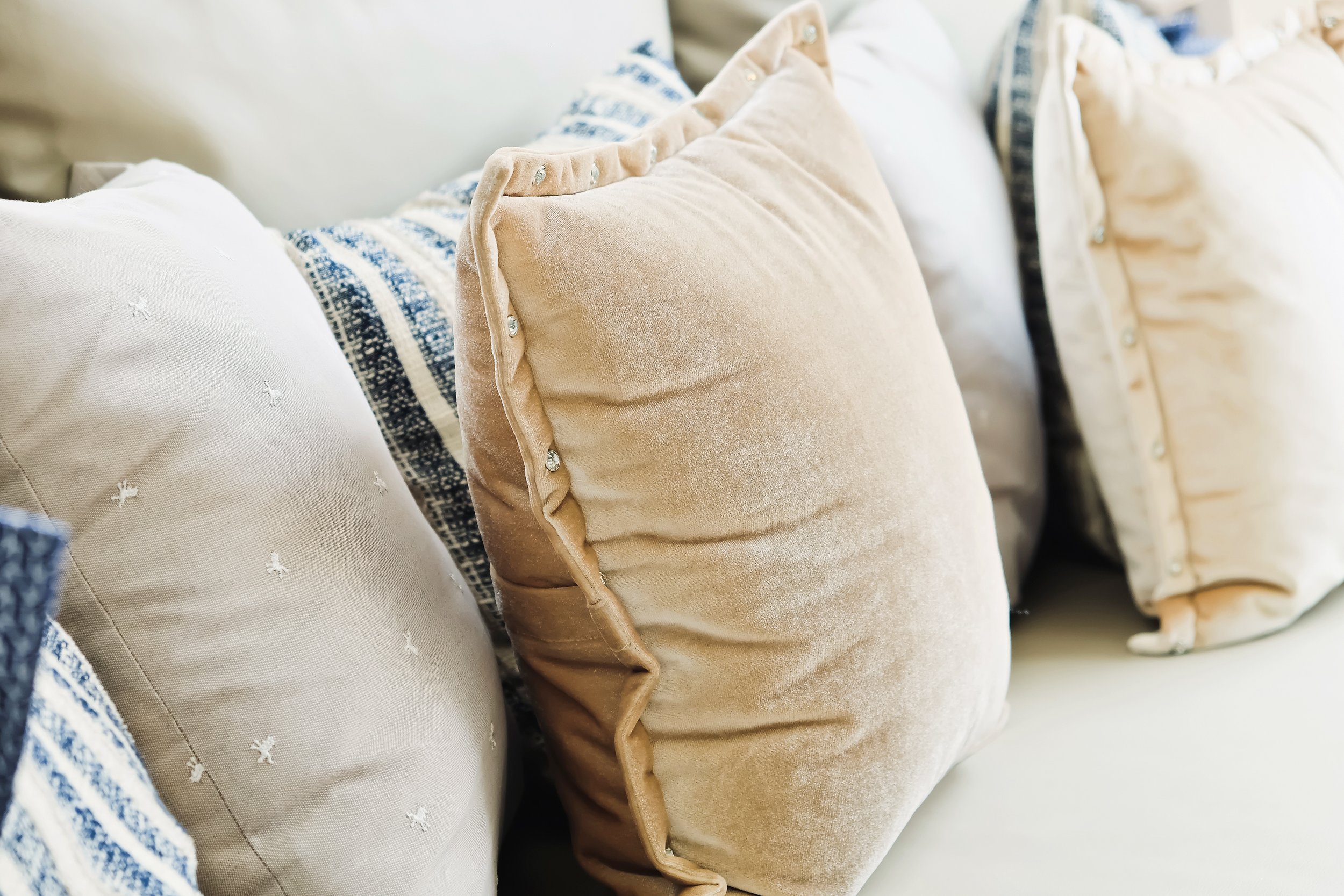Expert Tips for Cleaning Pillows and Removing Odors
Ever woken up and noticed your pillow doesn’t smell quite as fresh as it used to? Maybe it feels a little flat or looks stained, no matter how often you wash the case. You’re not imagining it; pillows naturally collect sweat, oils, and dust over time. What you’re resting your head on every night might be harboring bacteria, allergens, and lingering odors you can’t see.
The truth is, most people remember to clean their sheets but forget about their pillows entirely. And that's where the problem begins. A dirty pillow can ruin a good night’s sleep, cause allergies, and make your bed feel less inviting. If that rings a bell, you are in the right place.
In this guide, we will outline everything you need to know about cleaning pillows, from how to wash pillows to removing odors to keeping pillows lofty to learning how to freshen pillows with household products. The steps are simple, the tools are manageable to acquire, and by the end, your pillows will look, feel, and smell new again.
Key Takeaways
Cleaning pillows regularly leaves your bed smelling fresh and feeling hygienic and keeps odors out.
Machine washing and hand washing work equally; it just depends on the type of pillow you have.
Use baking soda, vinegar, or sunlight to remove lingering smells naturally.
Replace pillows every 1–2 years to maintain comfort and hygiene.
Proper maintenance between washes extends pillow life.
Ever Wonder Why Your Pillow Smells or Feels Flat?
Most people wash their sheets every week but completely forget about their pillows. Think about it, your pillow collects sweat, oils, drool, and dust mites every single night. Over time, that mix leads to odors and even affects your sleep quality.
If you’ve ever lain down and caught that musty smell, this blog is for you. Let’s talk about cleaning pillows the right way so you can enjoy fresher, fluffier sleep again, without tossing your pillows out too soon.
How Often Should You Wash Pillows?
You might be surprised to learn that pillows should be washed every 3–6 months. That’s because oils and sweat gradually seep through the pillowcase, attracting bacteria and allergens.
If you deal with allergies, have pets, or live in a humid climate, you’ll want to wash them even more often. And don’t forget, pillowcases should be washed weekly. They’re your first line of defense against grime buildup.
A good rule of thumb: if your pillow smells even after washing the cover, it’s time to give it a proper clean.
How to Machine-Wash Pillows
Machine washing is one of the easiest ways to deep clean most pillows, especially synthetic, down, or feather-filled ones. But before you toss them in, always check the label.
Materials You’ll Need
Mild liquid detergent
Tennis balls or dryer balls
A front-loading washer (top-loaders can twist pillows too much)
Step-by-Step Instructions
Check the care label. If it says “machine washable,” you’re good to go.
Balance the load. Wash two pillows at once to keep the washer balanced.
Use a gentle cycle. Using warm or cold water will perform best to assist in protecting your fill.
Rinse twice. Rinsing twice removes any leftover detergent.
Dry completely. Toss in tennis balls to keep them fluffy. Use low heat or air-dry until no moisture remains.
If you’re washing feather pillows, be patient. Feathers take longer to dry, but the effort pays off with soft, fresh pillows that feel like new.
Related Blog: How to Clean a Carpet: A Complete Guide
How to Hand-Wash Pillows
Some pillows, especially memory foam or latex, shouldn’t go in the machine. For those, handwashing is the safest way.
What You’ll Need
A clean tub or basin
Mild detergent
Towels for pressing out moisture
How to Wash Pillows by Hand
Fill your tub with lukewarm water and a small amount of detergent.
Submerge the pillow gently; don’t twist or wring it.
Rinse again until the soap is fully rinsed out with clean water.
Press out excess water using towels.
Lay the pillow flat in an area of good circulation or in the sun to dry.
Tip: Never hang foam pillows. The weight of the water can cause them to lose shape.
Real Customer Experience with Amenify's Pillow Cleaning Tips
“Thanks to Amenify’s expert pillow cleaning tips, I was finally able to get rid of the persistent odors. My pillows are now fresh, fluffy, and more comfortable than ever. It’s made a huge difference to my sleep quality!”
How to Remove Odors From Pillows
If your pillow smells even after a wash, don’t panic; it happens. Odors usually come from moisture or trapped bacteria, and you can fix that with a few simple tricks:
Baking soda: Sprinkle it on both sides of the pillow, let it sit for an hour, then vacuum it off.
White vinegar: Add half a cup to the rinse cycle for natural odor removal.
Sunlight: Fresh air and sunshine are nature’s disinfectants; air pillows outside once a week.
These simple steps go a long way in keeping your pillows smelling clean between washes.
How Often to Replace Pillows
Even the cleanest pillows don’t last forever. Most experts recommend replacing them every one to two years. Signs it’s time for a new one include:
It doesn’t spring back when folded in half.
It’s lumpy or flat.
It still smells after multiple washes.
Clean pillows help you sleep better and avoid sneezing or waking up with neck pain. If yours are past their prime, it might be time to refresh your bedding essentials.
Also Read: How Much Does Dry Cleaning Cost?
How to Maintain Pillows Between Washes
Cleaning your pillows doesn't stop at washing them! Below are a few quick ideas on how to extend their life:
Pillow protectors: They keep sweat and dust away.
Fluff: Fluffing your pillows daily not only keeps the filling inside evenly distributed but also helps air them out too.
Spot clean spills immediately: Don't let moisture sit.
Wash pillowcases weekly: This is the easiest way to keep everything fresh!
Air pillows in the sun when you can: A few hours outside can keep things odor-free!
If you have outdoor pillows, wash or wipe them down often since they are exposed to the elements. Sun, rain, and dust can cause odors and fading, so give them a quick rinse or vacuum every few weeks.
Conclusion
Caring for your pillows isn’t just about comfort; it’s about your health. Clean, fresh pillows mean better sleep, fewer allergens, and a more inviting bedroom.
By washing them regularly, using simple odour-removal tricks, and replacing them when needed, you’ll enjoy that just-washed freshness every night.
For those busy days when deep cleaning feels impossible, visit Amenify’s professional cleaning services for expert pillow‑cleaning tips and book your odor‑free makeover now!” Professionals are always ready to help you keep your home spotless—no stress, no effort, just fresh comfort every time.
Frequently Asked Questions
-
Check the care label. Most synthetic and down pillows can be machine-washed, but memory foam and latex cannot.
-
No, water can damage the material. Instead, spot clean with mild soap and water, then air dry.
-
Use a mix of baking soda and hydrogen peroxide, then rinse thoroughly. Always test a small spot first.
-
Depending on the material, it can take several hours. Make sure they’re completely dry to avoid mildew.
-
Use pillow protectors, air them outside weekly, and sprinkle baking soda in between washes. description
-
Absolutely. Professional cleaning services like Amenify can handle everything, from cleaning pillows to refreshing your entire bedding setup safely and effectively.





